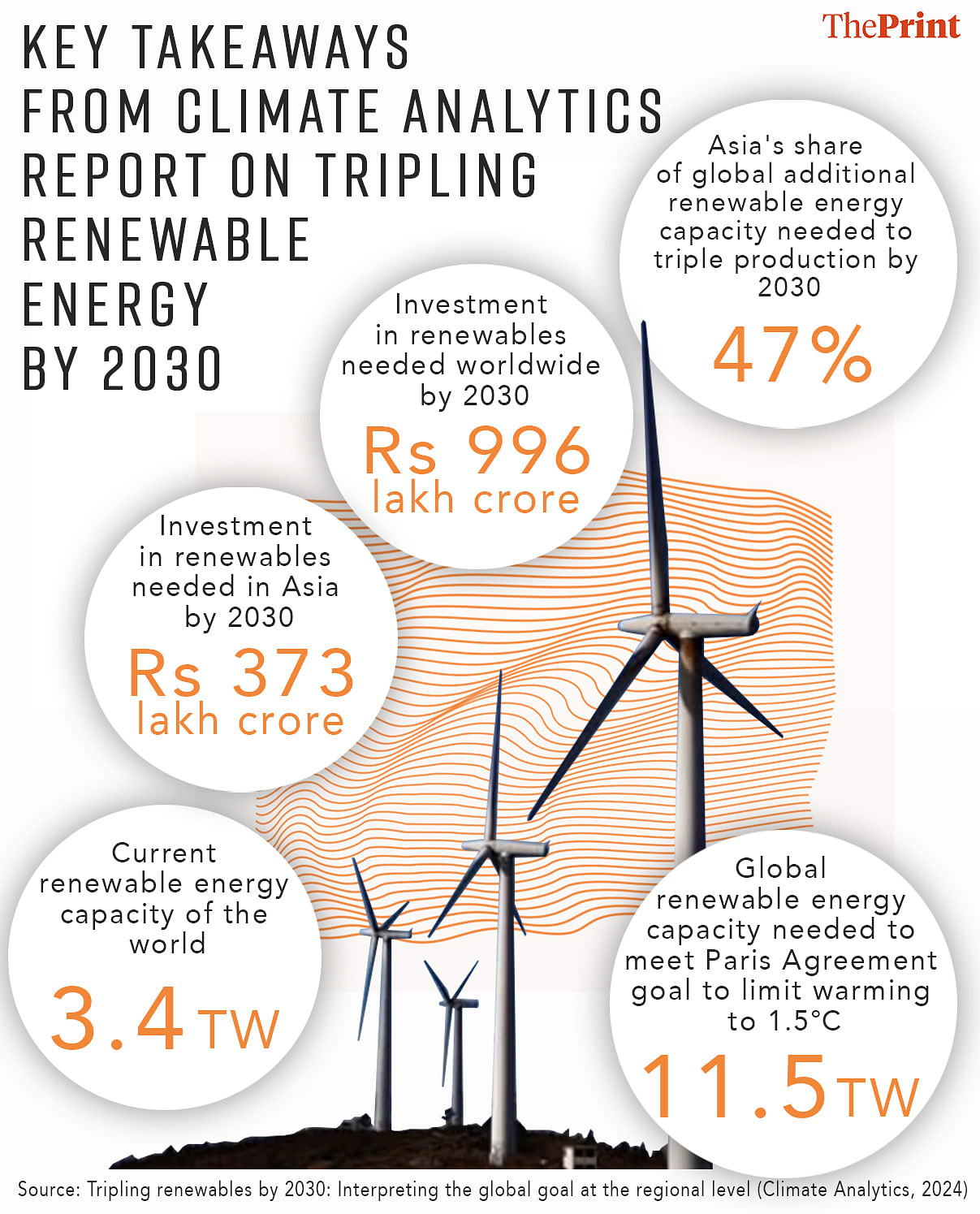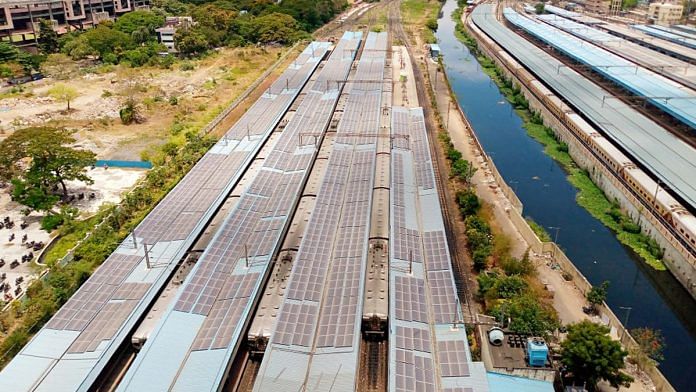New Delhi: At 47 percent, Asia is currently providing the largest share of additional global renewable energy capacity needed to triple production by 2030, said a report by the global think tank Climate Analytics released Tuesday. This is “driven by growth in India and China”.
In December 2023, the COP28 in Dubai set the target of tripling global renewables by 2030 to meet the Paris Agreement goal to limit warming to 1.5 degrees Celsius beyond industrial levels.
The report, which looked at different regions of the world, said only Asia is “broadly on track” to triple renewables by 2030, while sub-Saharan Africa lags the most.
The report also cautioned against the increasing growth of fossil fuels alongside renewables in India and China. “It will either jeopardise 1.5℃-aligned power sector transition or lead to a string of stranded assets.”
Climate Analytics used data from the International Energy Agency (IEA) and the Intergovernmental Panel on Climate Change (IPCC) to forecast investment required in renewables across regions. An investment of $2 trillion (Rs 166 lakh crore) each year until 2030, $12 trillion (Rs 996 lakh crore) in total, is needed globally to meet the COP28 goals.
“Nearly $2 trillion a year sounds like a cost, but it’s, really, a choice. We’re set to invest over $6 trillion (Rs 498 lakh crore) in fossil fuels over this decade. I’d rather go with the safer, best value option – renewables,” said Neil Grant, the lead author of the report.

While Asia needs $4.5 trillion (Rs 373 lakh crore) by 2030, sub-Saharan Africa needs $630 billion (Rs 52 lakh crore) the same period.
The report highlights that despite a lower investment amount, sub-Saharan Africa needs to increase its renewable energy investment by five times, the highest among all regions, to match the required levels. Overcoming historical underinvestment, sub-Saharan Africa will need to scale up renewables rapidly to meet its huge energy needs.
Also Read: 200 countries adopt ‘historic’ COP28 deal calling for transition away from fossil fuels for 1st time
Goal of tripling renewables ‘a floor, not a ceiling’
The current renewable energy capacity of the world is 3.4 terawatt (TW), and the capacity should be 11.5 TW by 2030 to meet the 1.5℃ goal. Based on current projections by IEA, the capacity will grow 2.5 times and reach 9 TW by 2030.
The Climate Analytics report said the renewable energy capacity of the world needs to grow 3.4-3.6 times by 2030. Still, the goal of tripling renewables by 2030 should be treated “as a floor, not a ceiling”, said the report, adding that the world needs to do much more to limit warming.
At least 47 percent of the total renewable energy additions needed by 2030 are to be in Asia, added the report. While energy demand is one reason, another is the high existing fossil fuel capacity of these countries. Asia currently has 46 percent of the world’s fossil fuel capacity.
As the renewable energy landscape evolves, India has emerged as a significant player, now ranking as the third-largest solar power generator globally. This growth is crucial as it aligns with the country’s ambitious targets for renewable energy capacity, which is expected to continue expanding rapidly. The increase in solar energy capacity is a vital component of India’s strategy to meet its energy demands while reducing reliance on fossil fuels, particularly coal. The shift towards solar energy is evident as India added over 18 terawatt hours (TWh) of solar energy in 2023 alone, showcasing its commitment to a sustainable energy future. solar power generator and renewable energy capacity are key areas of focus for the nation.
Asia also ranks high in terms of existing renewable energy capacity in the world, with 45 percent of the world’s capacity in the continent. One of the reasons is India, which has increased its renewables 30 times since 2014. Currently, India’s renewable energy capacity is at nearly 180 GW, the fourth highest in the world.
India, China & shifting energy landscape
The report said due to India and China’s current policies and renewable energy levels, Asia is the only region that could achieve the capacity needed to maintain the 1.5℃ goal by 2030. The two countries’ growth in renewables compensates for the relatively lower growth in other Asian countries like South Korea, it added.
“As India’s renewable energy capacity continues to expand, there is a notable trend towards reducing the reliance on traditional fuels,” said Saurabh Kumar, vice president (India) of Global Energy Alliance for People and Planet. “It might not be immediately apparent because of energy demand and infrastructure, but it indicates a shifting energy landscape.”
The report, however, is right to express concern. China and India are the world’s top two consumers of coal, accounting for more than half the total consumption of coal in the world.
Moreover, India does not plan to shut down or decommission any coal power plants before 2030, and coal still contributes more than half of the country’s total energy needs.
India is also planning to add 27 GW of thermal power, with plants currently under construction.
To match the required levels of renewables though, India can take several measures.
“It is evident that we face challenges in meeting our ambitious clean energy targets and addressing energy demands of a rapidly growing economy,” said Kumar.
“Blended finance, which combines private and philanthropic funds, presents a promising approach to scaling up investment in renewable energy projects. We can drive innovation and ensure energy security for future generations.”
(Edited by Madhurita Goswami)
Also read: Why India abstained from renewable energy pledge signed by 118 countries at COP28






